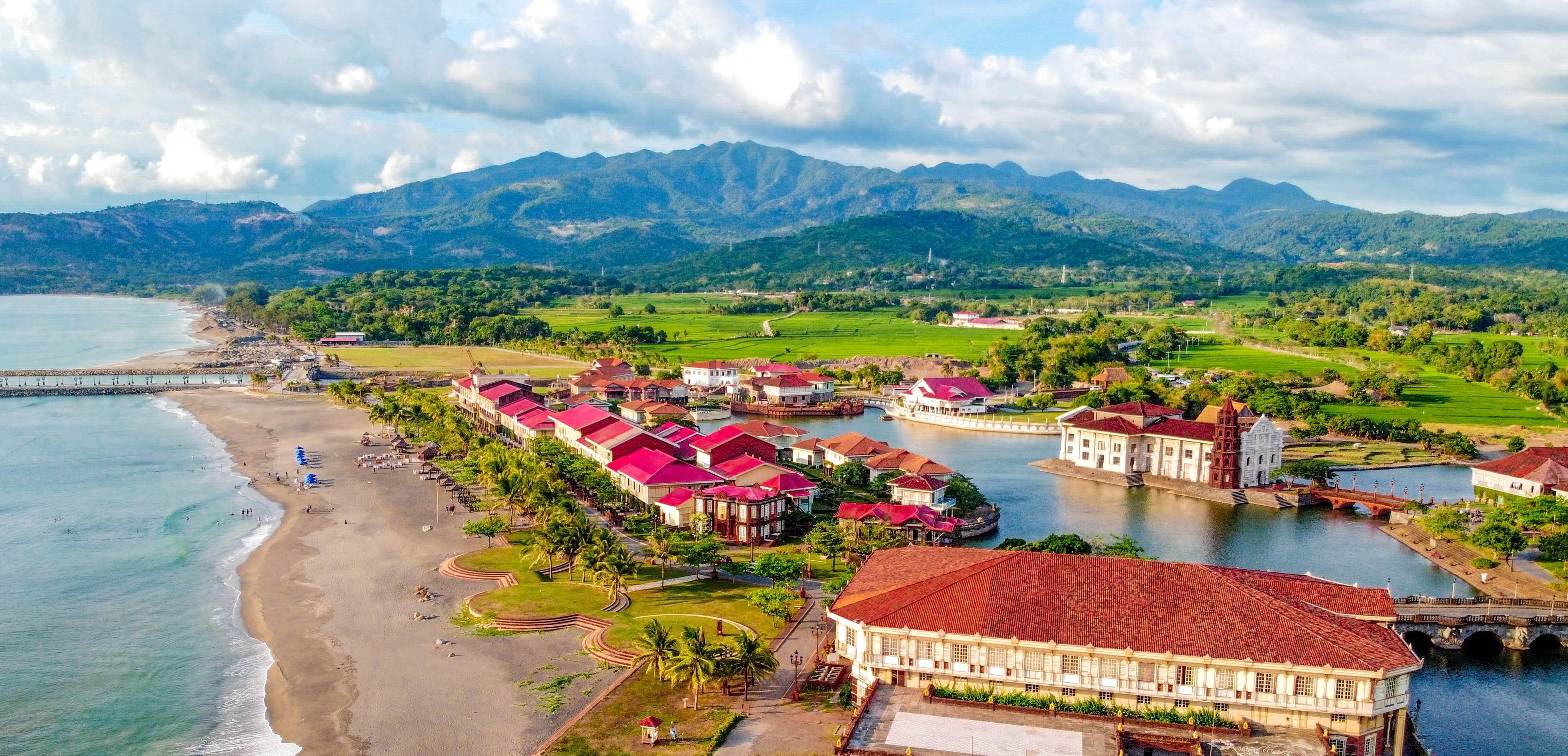“Pasko sa Pinas, Pasko sa Pinas, walang katulad sa buong mundo” (Christmas in the Philippines, Christmas in the Philippines, nothing compares to it in the whole world).
These lyrics from the popular Filipino Christmas song “Pasko sa Pinas (Christmas in the Philippines)” capture the essence of what makes the holiday season in the Philippines truly unique. In a world where the holiday season start in the latter part of each year, the Philippines stands out by doing its own thing with unparalleled enthusiasm.
Here, Christmas isn’t just a date on the calendar; it’s a months-long celebration that captivates the nation and echoes across the globe wherever Filipinos call home. As the song continues, “Kahit saan man sulok ng mundo, Pasko sa Pinas ang hanap-hanap ko” (No matter which corner of the world, Christmas in the Philippines is what I long for), it speaks to the heart of every Filipino, whether at home or abroad, who cherishes this extraordinary time of year.
Imagine a place where the first notes of “Jingle Bells” mingle with the lingering warmth of summer, where Santa might trade his sleigh for a colorful jeepney, and where the spirit of the season infuses daily life for a third of the year. This is Pasko sa Pinas (Christmas in the Philippines) — a celebration so vibrant and enduring that it has become a cultural phenomenon in its own right.
But what drives this extraordinary yuletide fervor? Is it merely an extended exercise in merrymaking, or does it speak to something deeper in the Filipino psyche? To understand Pasko sa Pinas is to glimpse the heart of a nation — its history, its values, and its irrepressible spirit.
As we embark on this journey through the world’s longest Christmas celebration, we’ll unwrap the layers of tradition, explore how a distinctly Filipino festivity has become a global phenomenon, and discover why, in an increasingly fast-paced world, this prolonged season of joy might be exactly what we all need.
The ‘-Ber’ Months: When Santa Trades His Sleigh for a Jeepney
As soon as the calendar flips to September, the country collectively decides it’s time to deck the halls, dust off the parols, and crank up Jose Mari Chan’s “Christmas In Our Hearts” or Mariah Carey’s “All I Want For Christmas Is You” to an almost constitutional level of ubiquity.
This early start isn’t mere impatience or overzealous commercialism. It’s a reflection of the Filipino spirit — always ready to celebrate, always looking for reasons to come together, and always, always in love with the magic of Christmas. The ‘-ber’ months, as they’re affectionately known, transform the entire nation into a four-month-long festival of faith, family, and feasting that would leave even Santa Clause breathless.
Malls begin to twinkle with early decorations, and the scent of holiday treats fills the air. It’s a gradual build-up that crescendos into a spectacular four-month celebration of faith, family, and festivity.
From Galleons to Gadgets
To understand this phenomenon, we must sail back through time to the era of galleons and conquistadors. When the Spanish arrived in the 16th century, they brought more than just colonialism — they introduced Christianity and, with it, the celebration of Christmas.
But Filipinos didn’t simply adopt these traditions wholesale. Instead, they wove them into the rich tapestry of their existing culture, creating a celebration as unique as the archipelago itself. The parol, that iconic star-shaped lantern, may represent the Star of Bethlehem, but its warm glow also echoes pre-colonial traditions of hanging lights to guide ancestral spirits.
Similarly, the Simbang Gabi, a series of nine dawn masses leading up to Christmas Day, was adapted from the Spanish tradition but scheduled in the early morning to accommodate Filipino farmers who needed to work in the fields during the day. This blending of traditions is evident in many aspects of Pasko sa Pinas, creating a unique syncretic celebration that reflected both their new faith and their ancient cultural heritage.
As the centuries passed, this syncretism only deepened. American influence added a dash of commercialism and a sprinkling of pop culture. The post-war economic boom of the 60s and 70s saw Christmas celebrations grow ever more elaborate. Department stores and malls began to put up decorations earlier and earlier, capitalizing on the Filipino love for the holiday season.
This commercial trend coincided with increasing urbanization and the growth of overseas Filipino communities. For many Filipinos working abroad or in big cities far from their hometowns, the extended Christmas season became a way to combat homesickness and maintain connections with their cultural roots.
By the 1990s, it was common to hear Christmas carols playing in malls and on radio stations as early as September 1st. Far from being seen as premature or excessive, this early start to the season was embraced by most Filipinos as a welcome extension of their favorite time of year.
The Anatomy of Pinoy Christmas
What makes Pinoy Christmas unique is not just its duration but the richness and diversity of its traditions. These customs form a complex tapestry of faith, family, food, and festivity that evolves over the four-month period.
December sees the celebration reach its peak. Simbang Gabi, the nine-day series of pre-dawn masses, begins on December 16. This leads up to the grand Noche Buena, the family dinner on Christmas Eve, followed by gift-giving. The revelry continues through New Year’s Eve and into January, with the celebration of the Feast of the Three Kings on the first Sunday of the month marking the gentle wind-down of the season.
Throughout this period, certain elements remain constant. The parol, traditionally made of bamboo and paper but now crafted in various designs and materials, hangs in windows and streets. Belens (Nativity scenes) are prominently displayed in homes, churches, and public spaces. Groups of children (and sometimes adults) go caroling from house to house, often using homemade instruments. And of course, there’s food — lots of it. The Noche Buena feast typically features dishes like lechon (roasted pig), queso de bola (Edam cheese), and various native delicacies.
Worldwide Parol
Today, Pinoy Christmas is no longer confined to the islands of the Philippines. As millions of Filipinos have spread across the globe in search of work and new opportunities, they’ve taken their Christmas traditions with them, creating a worldwide diaspora of Filipino Christmas celebrations.
From the neon-lit streets of Hong Kong to the snowy suburbs of Toronto, from the deserts of Dubai to the boulevards of Rome, the Filipino diaspora has turned their unique brand of Christmas into a global export. This global spread has not only maintained cultural ties for overseas Filipinos but has also introduced these joyous traditions to communities around the world.
In Hong Kong’s central district, Sundays in December see thousands of Filipino workers transform public spaces into impromptu fiestas, complete with caroling and potluck. In the United Arab Emirates, despite being a predominantly Muslim country, shopping malls echo with the sounds of Filipino Christmas presentations and food fairs. Rome hosts an annual “Pasko sa Roma” festival, featuring traditional dances, food, and of course, a parol-making competition.
In the United States, cities like Los Angeles and San Francisco host Filipino Christmas bazaars and parol-making workshops that have become popular community events. The Simbang Gabi has been adapted to fit local schedules, often held in the evening rather than pre-dawn.
This global spread has led to fascinating adaptations and fusions. In colder climates, the parol has been reinvented to withstand snow and freezing temperatures, with some communities organizing parol parades featuring weather-resistant designs. Filipino-fusion cuisine has emerged, blending traditional Noche Buena dishes with local flavors. In California, for example, you might find yourself biting into a curiously fusion dish of lechon tacos or bibingka cheesecake at a Christmas market.
Even the tradition of balikbayan boxes has evolved. Originally these were boxes of gifts sent by OFWs to their families in the Philippines. Now, in countries with large Filipino communities, there’s a reverse trend of sending boxes filled with local specialties to family members in other countries.
Heart of Pinoy Christmas
Yet, for all its festivity and global reach, the true essence of Pinoy Christmas lies not in its duration or its spectacle, but in its heart. At its core, this celebration embodies values that resonate far beyond the Filipino community.
Faith remains a cornerstone, with the Simbang Gabi masses drawing crowds that spill out of churches and into the streets. Even those who aren’t regular churchgoers often make an effort to attend these special services, seeing them as an integral part of the Christmas experience.
Family is paramount, with Christmas being a time of homecoming and reunion, whether in person or, increasingly, through video calls that bridge oceans and time zones. The anticipation of being with loved ones, sharing meals, and exchanging gifts adds to the excitement of the extended celebration.
The spirit of bayanihan — of community and helping one another — shines brightly during this season. Countless charity initiatives and community events mark the celebration, with many Filipinos going out of their way to ensure that the less fortunate can also experience the joy of Christmas.
Perhaps most poignantly, Pinoy Christmas is a testament to resilience. In a country often battered by natural disasters and economic challenges, the ability to celebrate with undiminished joy is not just admirable — it’s inspirational. It’s a reminder that happiness is not dependent on circumstances, but on the warmth of human connections and the strength of the human spirit.
Why the World Needs a Little More Pinoy Christmas
The four-month Filipino Christmas is more than just an extended holiday; it’s a reflection of the Filipino people themselves — warm, resilient, family-oriented, and always ready to find joy in life’s simple pleasures. As it spreads across the globe, carried in the hearts of millions of Filipinos, it offers a unique gift to the world: a reminder that Christmas is not just a day, but a spirit of love, generosity, and hope that can illuminate our lives long beyond the holiday season.
So the next time you hear “Christmas in Our Hearts” playing in a mall in September, don’t roll your eyes. Instead, smile and think of the millions of Filipinos around the world who are opening their hearts to the season of joy. After all, in the Philippines and wherever Filipinos call home, Christmas isn’t just a date on the calendar — it’s a feeling, a spirit, and a way of life that makes every day a little bit brighter.
In embracing Pinoy Christmas, we embrace a celebration that captures the very best of the human spirit — our capacity for joy, our love for one another, and our ability to find light even in the darkest of times. And in a world that could always use a little more of all of these things, perhaps we could all benefit from making our Christmases just a little bit more Filipino.






